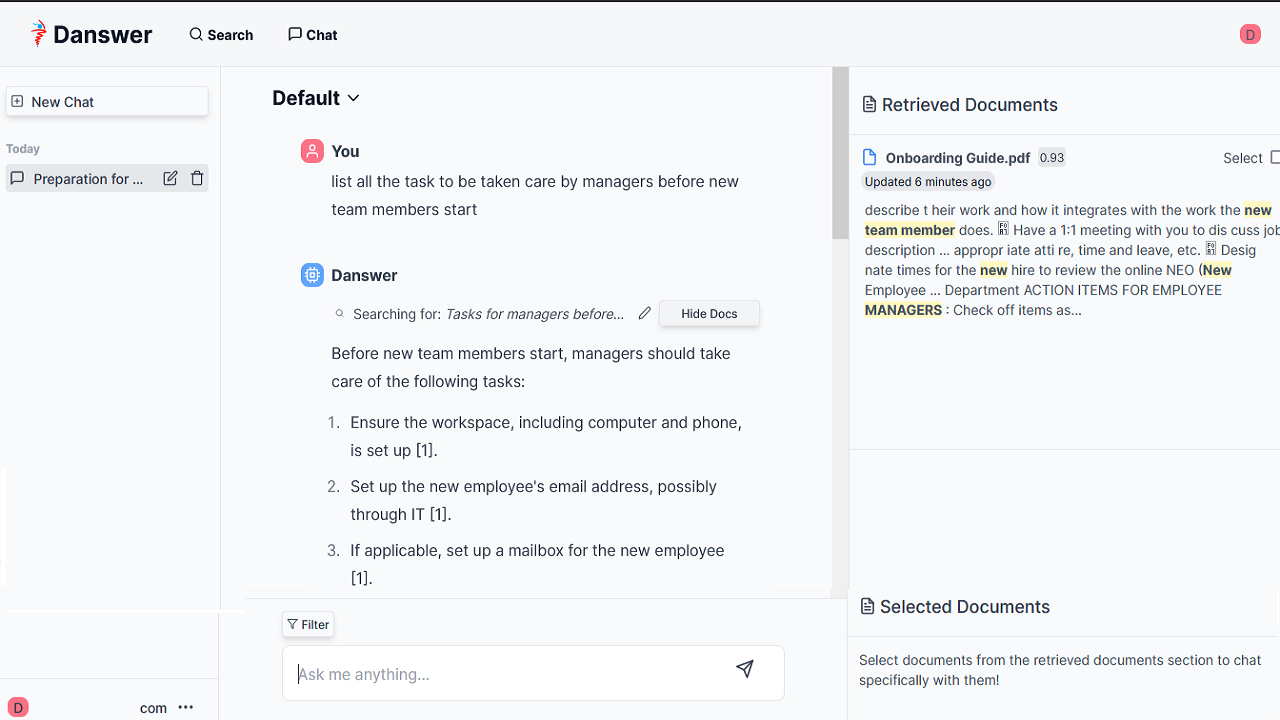How to get Danswer Provided by Techlatest.net on Google Cloud(GCP)
- Open Danswer:GPT to chat & query your own data marketplace listing on GCP Marketplace.

- Click Launch.
-
It will take you to the agreement page. On this page, you can change the project from the project selector on top navigator bar as shown in the below screenshot.
-
Accept the Terms and agreements by ticking the checkbox and clicking on the AGREE button.
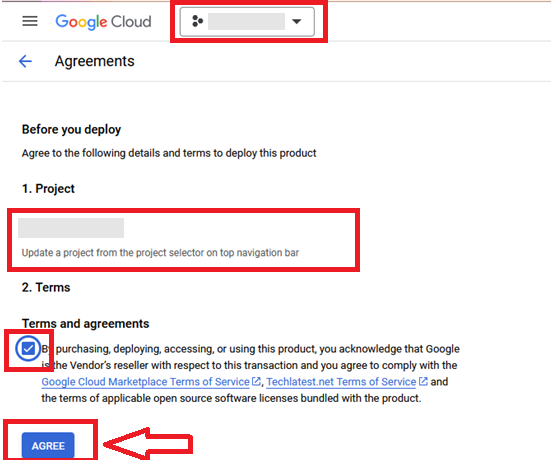
-
It will show you the successfully agreed popup page. Click on Deploy.
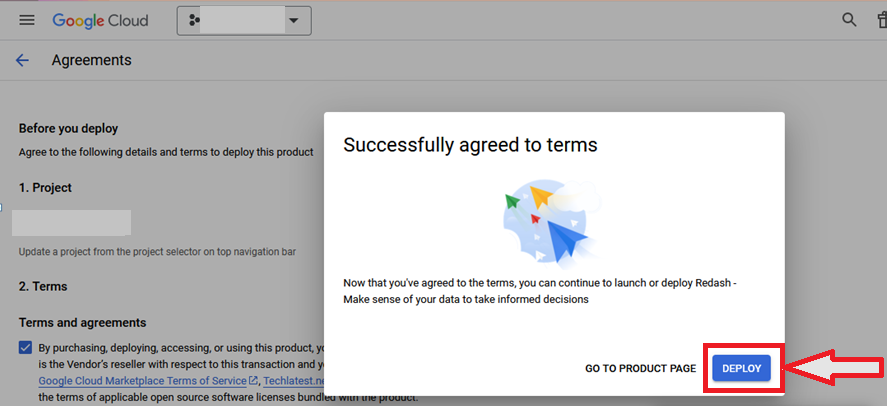
-
On deployment page, give a name to your deployment.
- In Deployment Service Account section, click on Existing radio button and Choose a service account from the Select a Service Account dropdown.
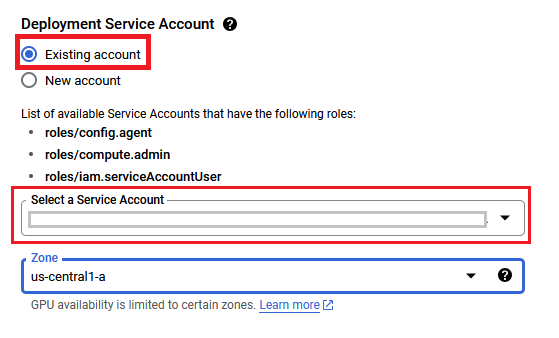
- If you don't see any service account in dropdown, then change the radio button to New Account and create the new service account here.
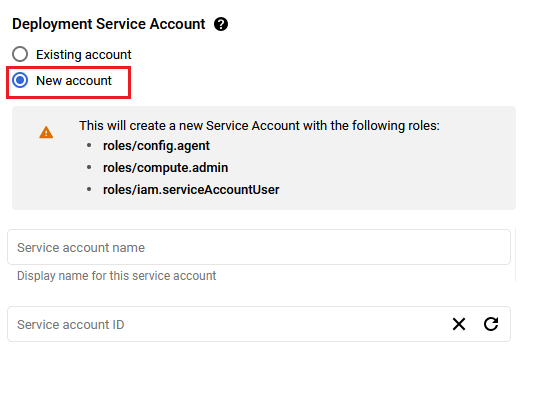
- If after selecting New Account option, you get below permission error message then please reach out to your GCP admin to create service account by following Step by step guide to create GCP Service Account and then refresh this deployment page once the service account is created, it should be available in the dropdown.
You are missing resourcemanager.projects.setIamPolicy permission, which is needed to set the required roles on the created Service Account
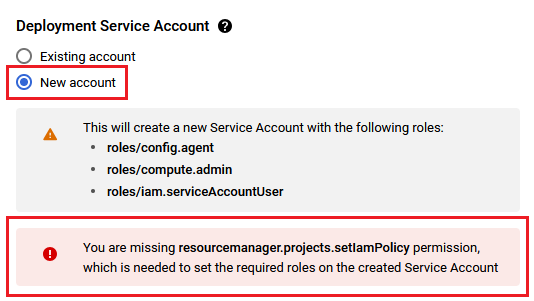
- Select a zone where you want to launch the VM(such as us-east1-)
- Optionally change the number of cores and amount of memory. (This defaults to 2 vCPUs and 7.5 GB ram.)

- Optionally change the boot disk type and size. (This defaults to “Standard Persistent Disk” and 60 GB respectively)
- Select the default network and subnetwork which has ports 22 (for SSH), 3389 (for RDP) and 443 (for HTTPS) exposed.
- Click Deploy when you are done. Danswer VM will begin deploying.

-
A summary page displays when the compute engine is successfully deployed. Click on the Instance link to go to the instance page.
-
To SSH to the VM go to the instance page, click on the “SSH” button, select “Open in browser window”.
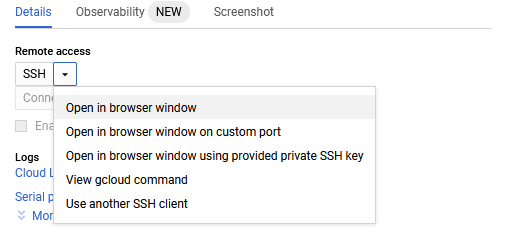
- This will open SSH window in a browser.
- Run below command to set the password for “ubuntu” user

-
Now the password for ubuntu user is set, you can connect to the VM’s desktop environment from any local windows machine using RDP or linux machine using Remmina.
-
To connect using RDP via Windows machine, first note the external IP of the VM from VM details page as highlighted below
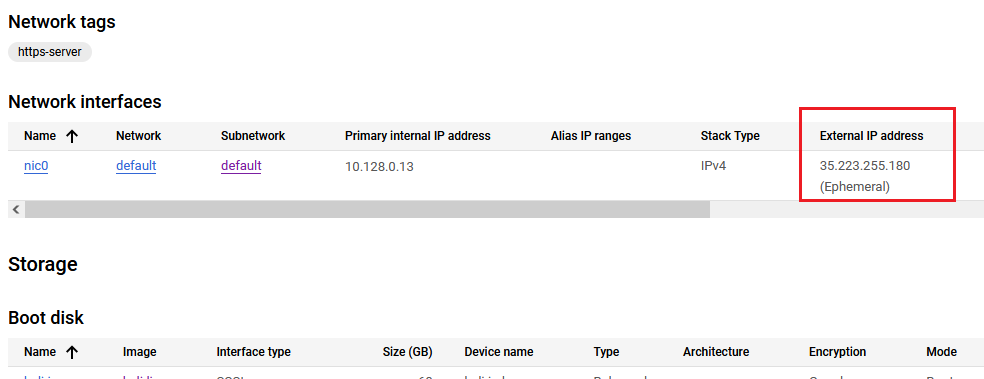
-
Then From your local windows machine, goto “start” menu, in the search box type and select “Remote desktop connection”
-
In the “Remote Desktop connection” wizard, paste the external IP and click connect

- This will connect you to the VM’s desktop environment. Provide “ubuntu” as the userid and the password set in step 6 to authenticate. Click OK
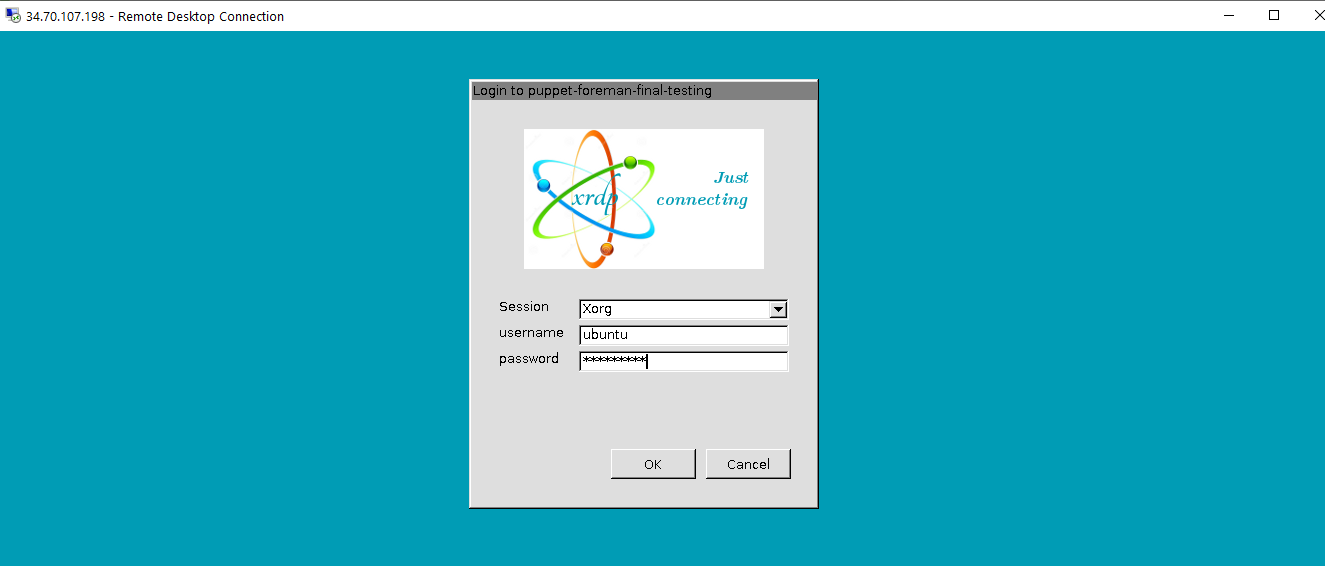
- Now you are connected to out of box Danswer VM Desktop environment via Windows machines.
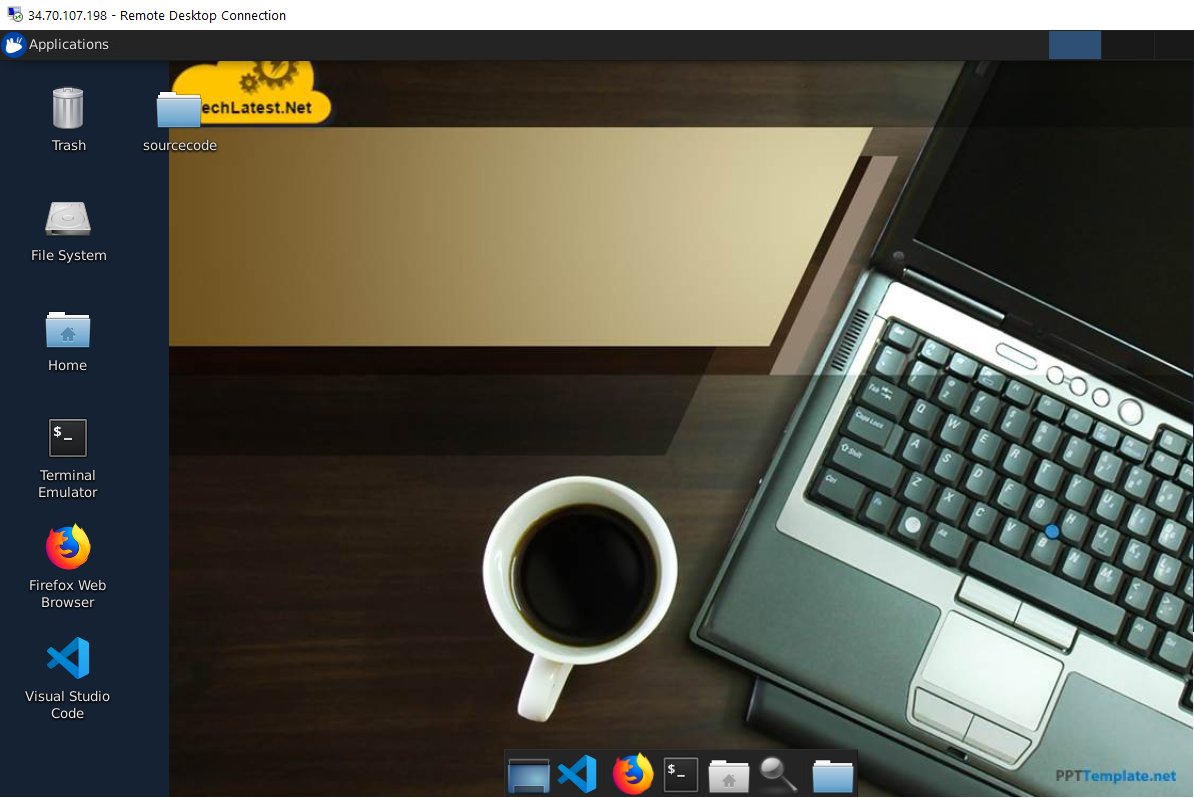
-
To connect using RDP via Linux machine, first note the external IP of the VM from VM details page,then from your local Linux machine, goto menu, in the search box type and select “Remmina”.
Note: If you don’t have Remmina installed on your Linux machine, firstInstall Remmina as per your linux distribution.
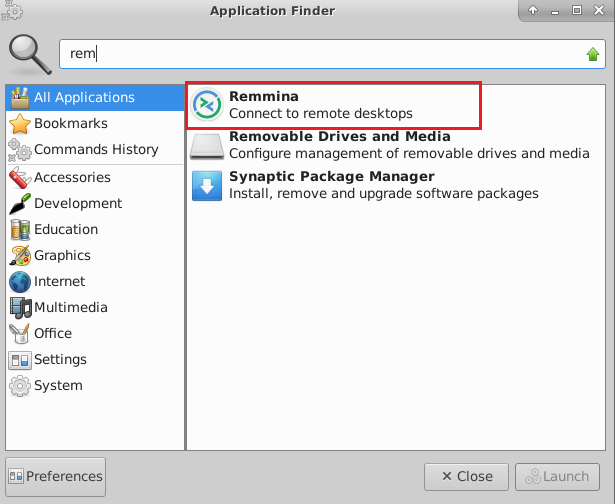
- In the “Remmina Remote Desktop Client” wizard, select the RDP option from dropdown and paste the external ip and click enter.
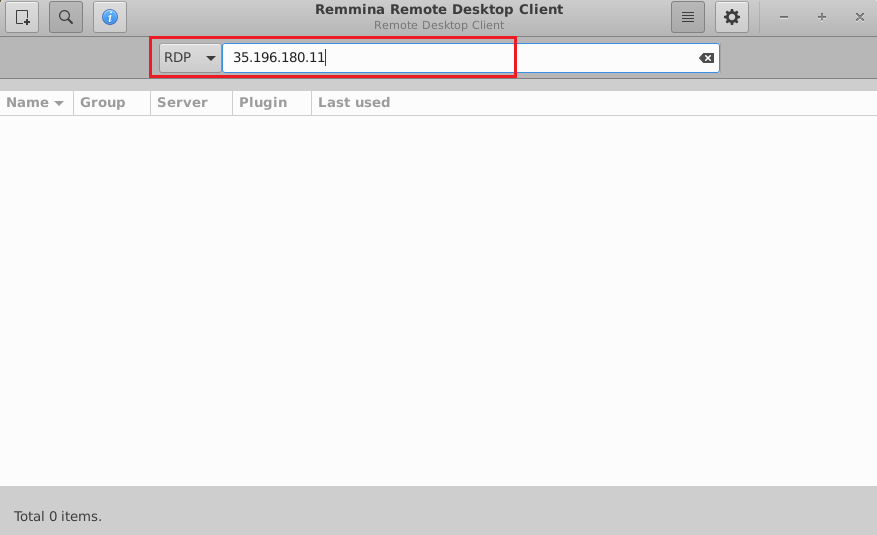
- This will connect you to the VM’s desktop environment. Provide “ubuntu” as the userid and the password set in step 6 to authenticate. Click OK
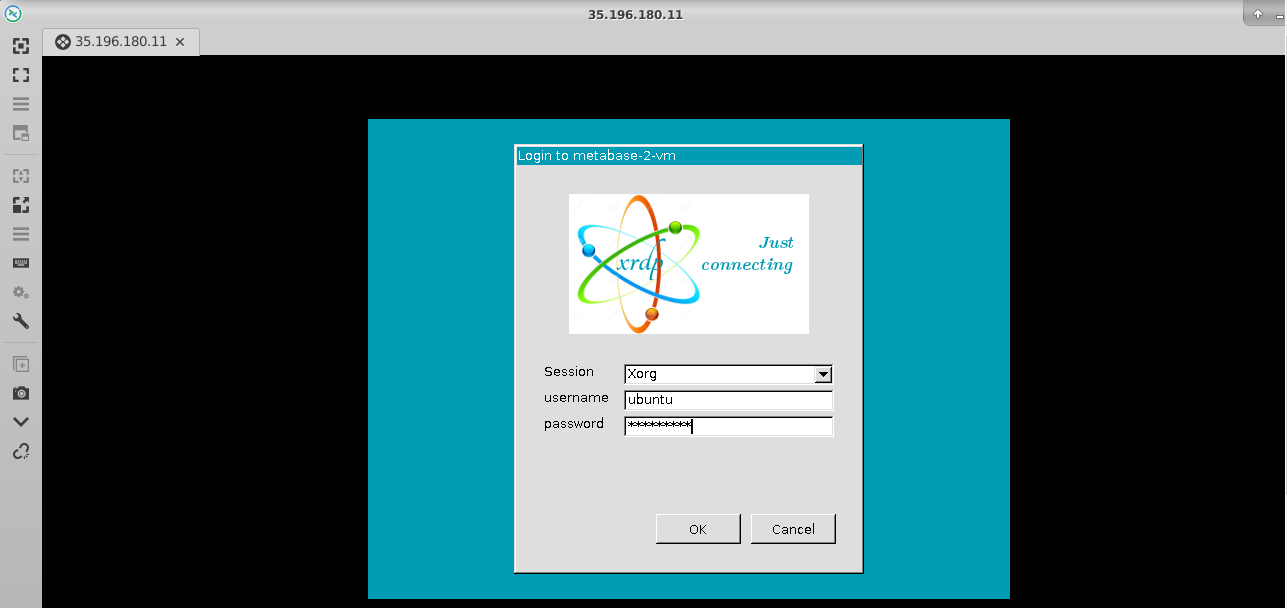
- Now you are connected to out of box Danswer VM Desktop environment via Linux machine.

- To access the Danswer GUI environment via browser, Copy the Public IP address of the VM from the VM’s details page and enter the address as https://vm_public_ip/ in the browser. Hit enter.
Note: Please use https and not http in the URL when accessing Danswer GUI, e.g. https://35.223.255.180/
- While accessing GUI via browser, ssl certification warning will be shown.
-
On Firefox Browser, Click on Advanced and then select Accept the risk and Continue.
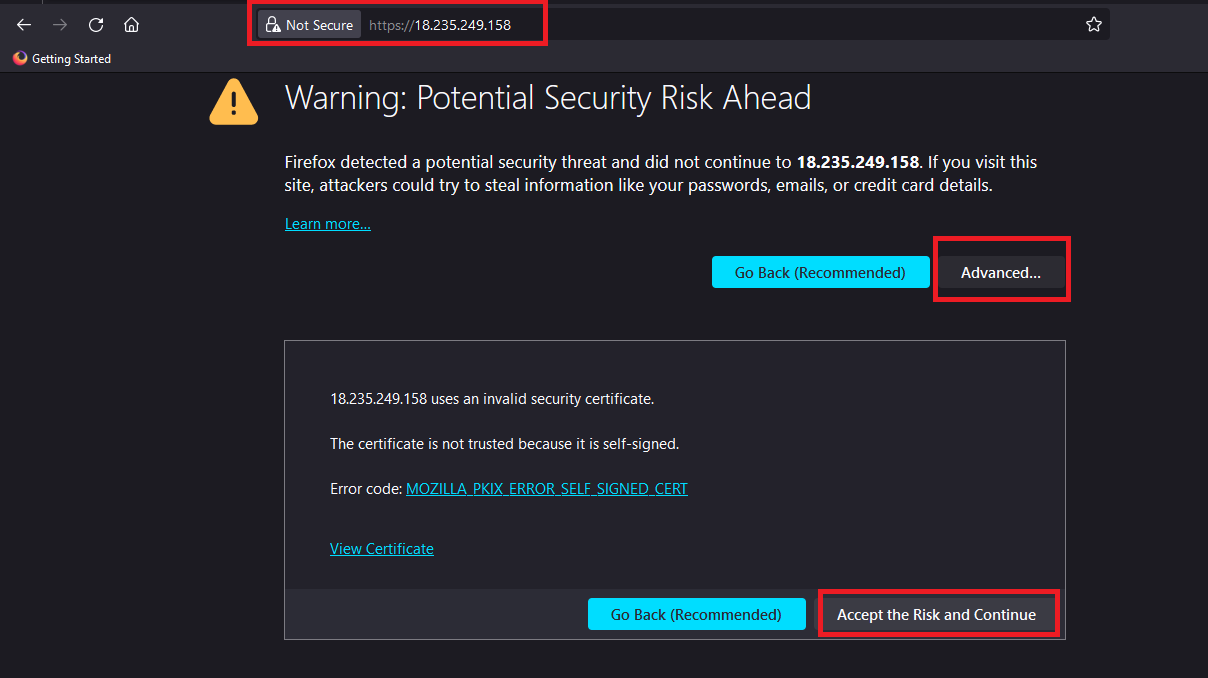
-
On Chrome Browser, Click on Advanced and select the Proceed to … option.
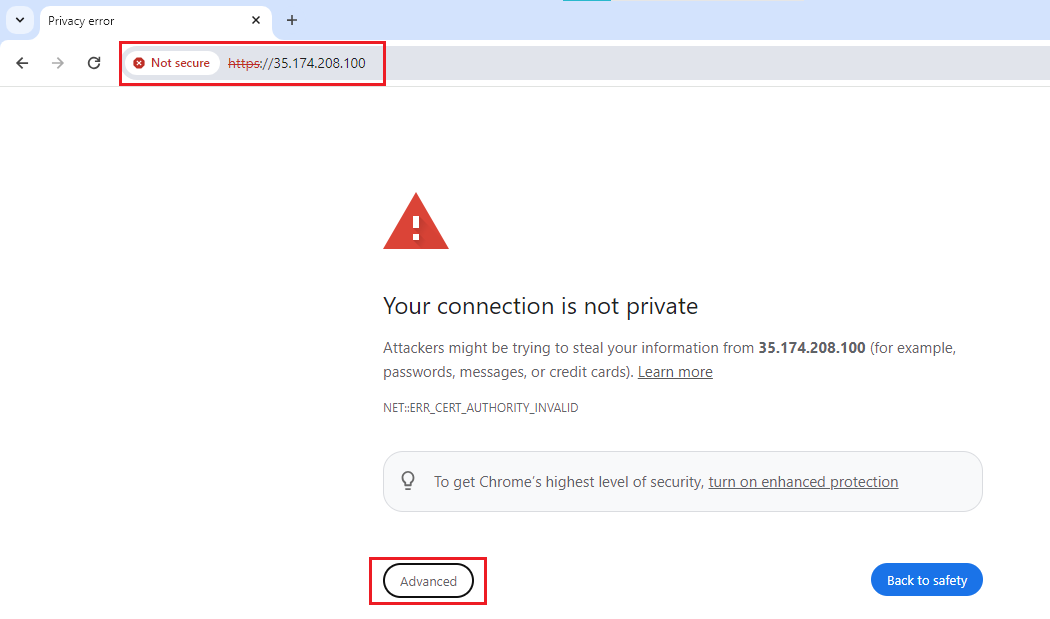
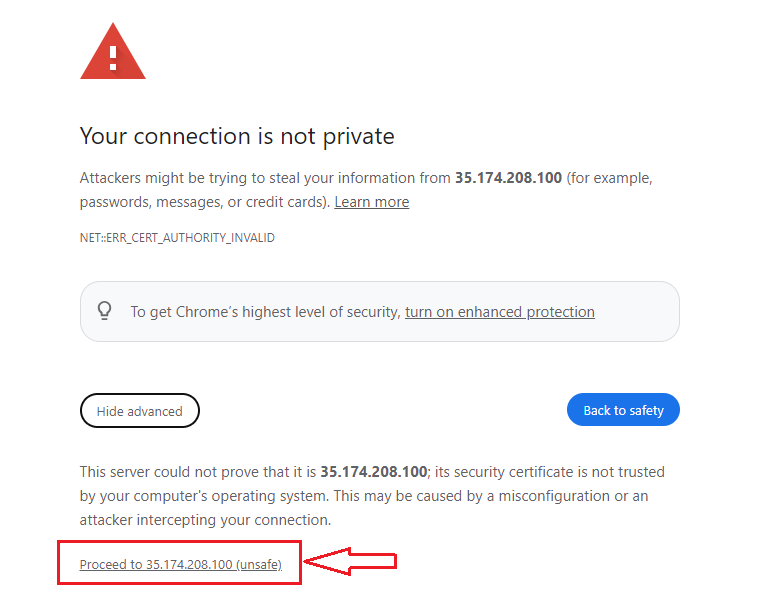
- On Edge Browser , click on Advanced and select the Proceed to … option.
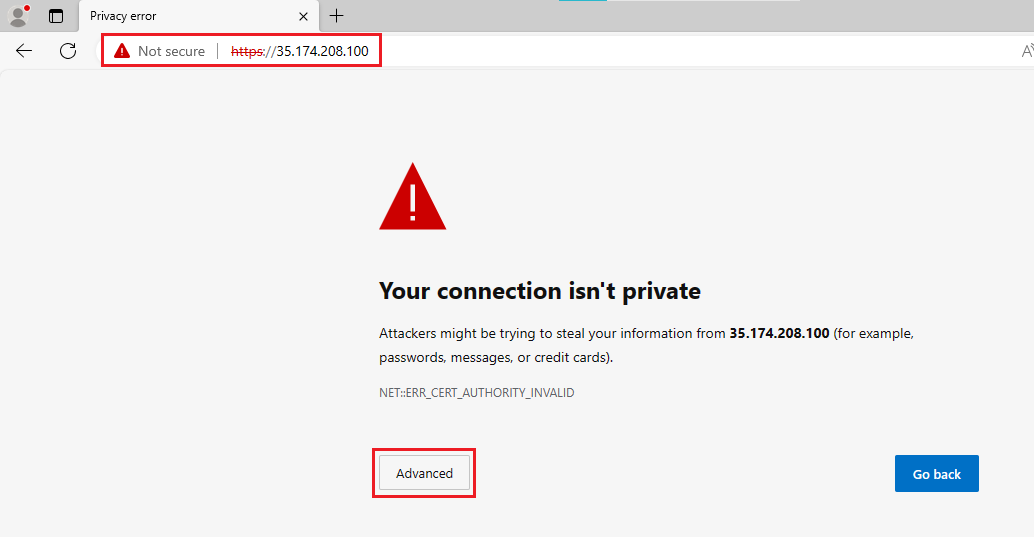
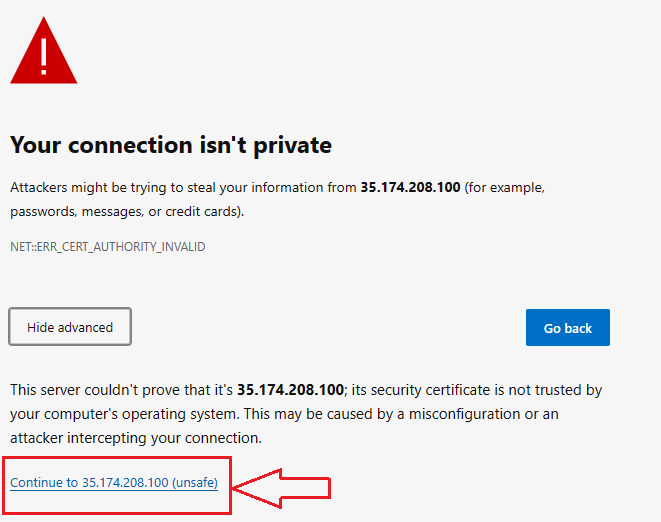
- When accessing the UI for the first time , click on the “create an account” link on the login page, provide your email id and password and hit Sign Up button. This will create the first user with admin role.
Note: You can also limit the new user registration for specific domain. Please follow
How to secure user registration page for more details.


- After your first login, it will take you to the connector Page. You can choose any from the available list. Like Files connector here. Have the file uploaded from the selected connector. It will do indexing of the file.
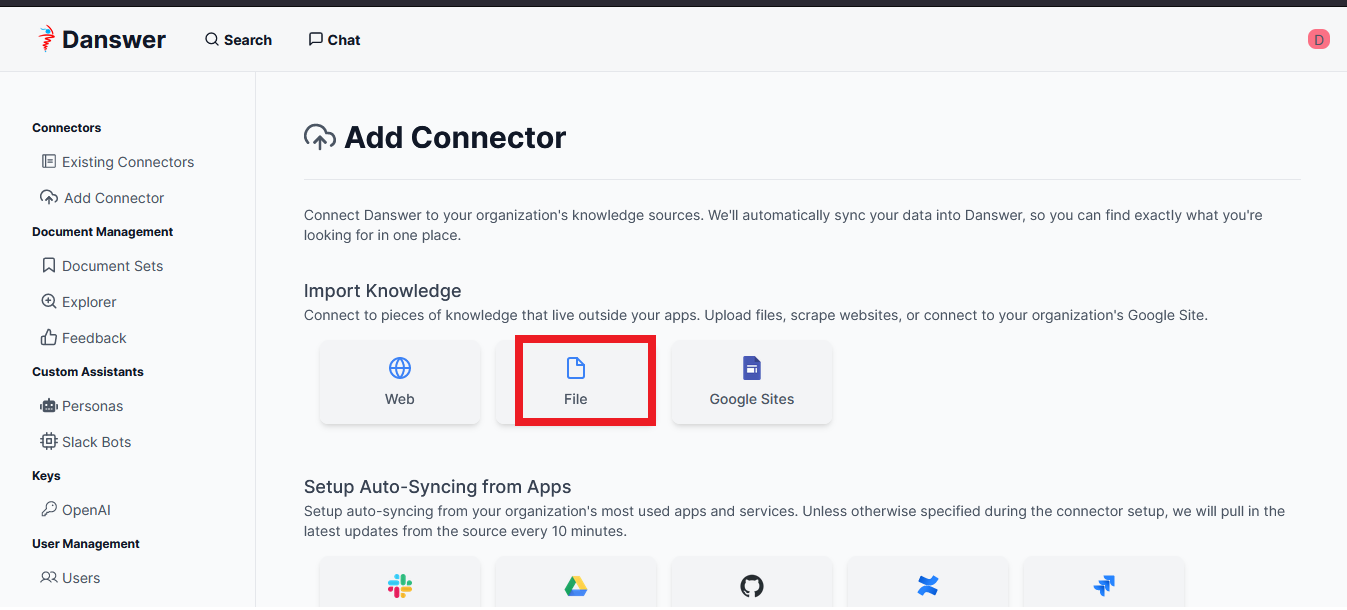
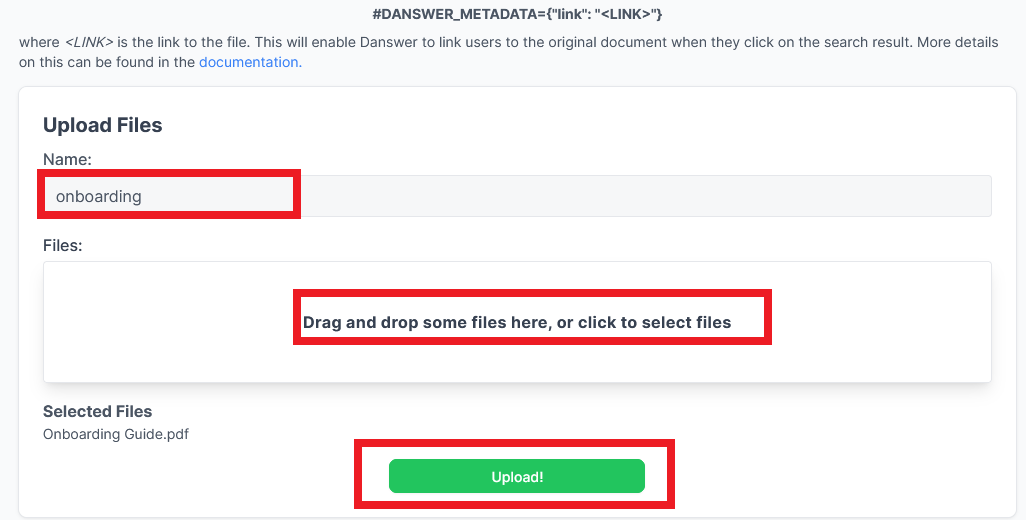
- Note: On the initial visit, Danswer will prompt for an OpenAI API key. Without this Danswer will be able to provide search functionalities but not direct Question Answering. You can get it from OpenAI API key .
Once you have created your OpenAI API keys, Go to Danswer GUI, from the admin panel page , click on OpenAI tab in left panel. Add your keys here.
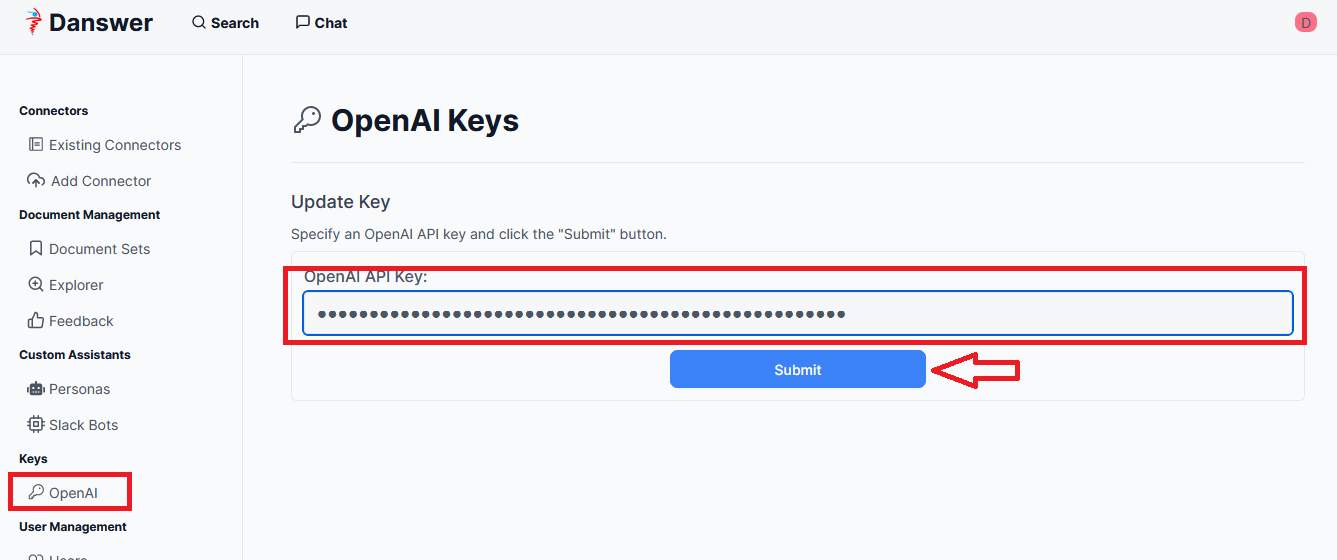
- Once indexing of the uploaded file is complete and you have the API Key added, you can use search/chat functionality to query the document. To check the indexing status , go to Existing connector tab from admin menu.

- Now you are good to go. Click on search tab to search for anything from the uploaded documents.
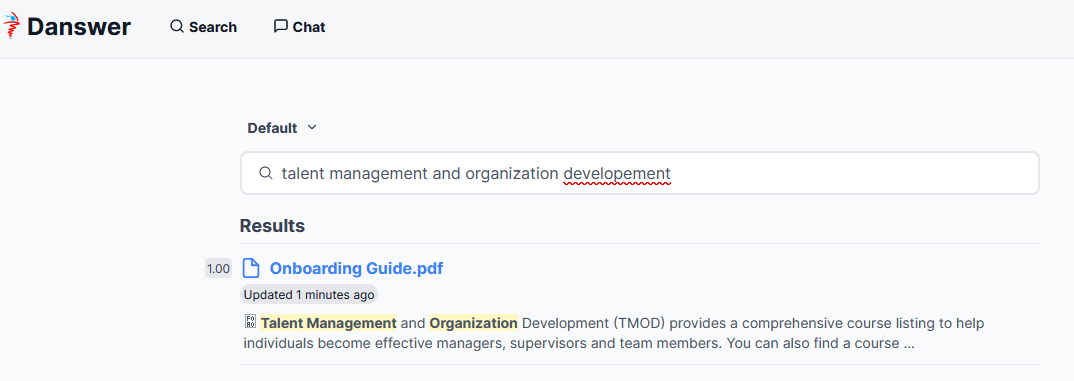
- Click on Chat tab to start the Chat. You can also ask the follow up questions here.
